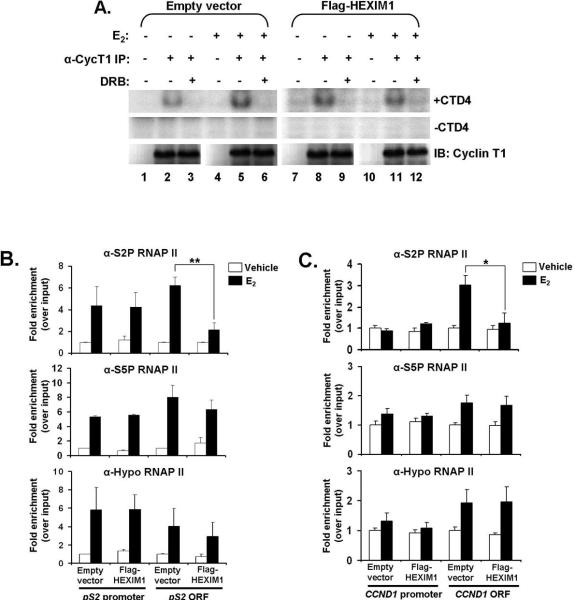Figure 5. Increased HEXIM1 expression inhibits E2-induced P-TEFb activity and recruitment of serine 2 (hyperphosphorylated) RNA polymerase II to the coding region of ER-responsive genes.
A. Increased HEXIM1 expression decreased E2-induced CTD4 peptide phosphorylation. MCF-7 cells were transiently transfected with pCMV-Tag2B-HEXIM1 or empty vector and treated with ethanol vehicle or 100 nM E2 for 90 minutes. Cell lysates were subjected to immunoprecipitation with antibodies against cyclin T1 and rabbit IgG (as an IP control). The immunoprecipitates were divided into two halves with one half getting 2 μg of the CTD4 peptide added to the reaction (−/+ CTD4). Fifty μM DRB was also added to some immunoprecipitates as a kinase assay control. The kinase reactions were analyzed by SDS-PAGE using autoradiography. Equal volumes of kinase reactions were also analyzed by Western blot to check specificity of anti-cyclin T1 antibody in immunoprecipitation. Panels are representative of at least four independent experiments.
B. HEXIM1 inhibits E2-dependent recruitment of S2P RNAP II to pS2 ORF. MCF-7 cells were treated as described in Figure 4 and subjected to ChIP analysis with antibodies against serine 2 phosphorylated (S2P) RNAP II, serine 5 phosphorylated (S5P) RNAP II and the unphosphosphorylated form of RNAP II (8WG16). The regions of pS2 amplified by PCR are as indicated. Columns, mean of 3-5 independent replicates; bars, SE; **, P<0.005
C. HEXIM1 inhibits E2-dependent recruitment of S2P RNAP II to CCND1 ORF. MCF-7 cells were treated as described. The regions of CCND1 amplified by PCR are as indicated. Columns, mean of 3-4 independent replicates; bars, SE; *, P<0.05

